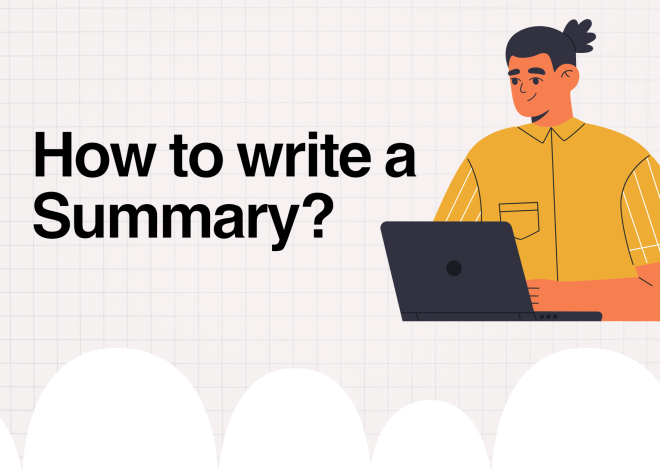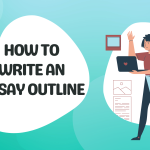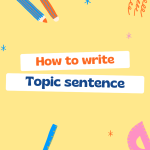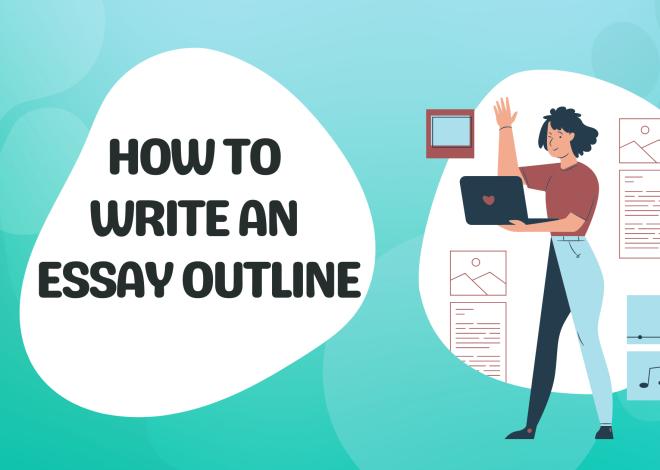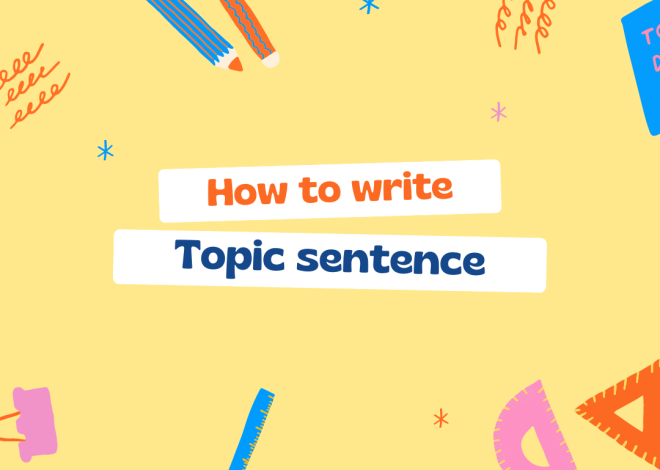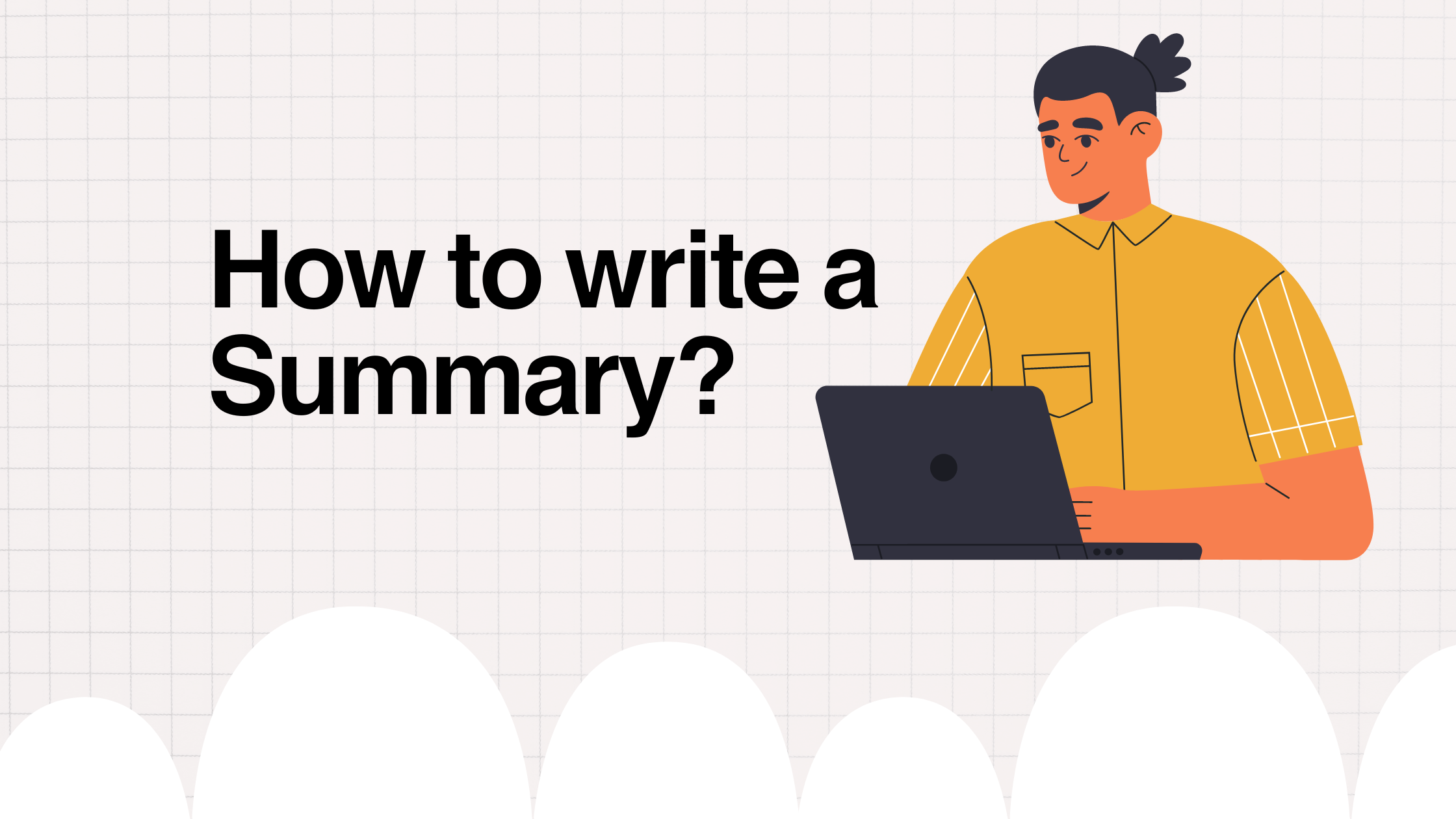
How to write a summary
Summarizing is a way, the process of shortening the text by highlighting the main idea and important information. Summarizing helps the student to think about what they have learned, write in a logical and understandable manner, and explain in their own words what has been learned.
However, writing a good summary is not a complex task if you follow the right method. You have to translate text in a few words while faithfully respecting the ideas expressed by the author. That is why it is the most important academic skill that a student has to learn.
Keep reading and you will learn a complete step-by-step guide to writing a perfect summary, the methods of how to write, tips to follow, and mistakes to avoid.
What is summary writing?
The summary is a shortened version of a text that highlights key points. You give the most important content of a text in your own words. It’s a way to check your understanding of the text written in a concise way.
The best approach for writing a summary is to reread the text a couple of times for better understanding. To understand well, read it carefully, and learn unfamiliar terms and words and structure of the text. If you don’t understand the text well, your summary will be incomprehensible, or at least inconsistent.
Many questions come to mind when you are writing a summary for the first time. Such as:
- What should be the length of the summary?
- How to summarise an article?
- How many paragraphs are there in an article?
- What main points does a summary include?
- How to summarize the sentences?
This article will give answers to all these questions.
1. Read the original piece
The first step is reading the text to be summarized to identify the main points. After reading this, you should be able to answer the question: What is the text about?
An in-depth reading of the text aims to bring out the words carrying ideas, the significant passages, the facts, the arguments, and the connecting words. All means are good to identify these elements. Do not make formal notes at this stage, the idea is to be familiar with the general understanding of the text.
After reading the original text, you must be able to answer the following question:
- What is the author talking about?
- What is the tone of the author?
- What is the message that the author wants to convey?
2. Understand the main idea and secondary idea
Once you have an understanding of the original text, main points, and general tone of the author. Now, it’s time to absorb this information to identify the main and secondary ideas and their sequence.
A main idea is a meaningful unit of the text. It is necessary to understand the meaning of the text. The main idea that the author wants to convey is the guiding idea of the text. The sequence of your text depends on the sequence in which the author has described the main idea.
A secondary idea clarifies the main idea but is not necessary to understand the meaning of the text.
By this stage you should be able to locate the following:
- Keywords
- The main ideas.
- Secondary ideas.
- The logical articulations (the connecting words).
- The examples from which the author starts to develop his thoughts.
- The examples are necessary to understand the meaning of the text.
- The conclusion.
3. Reread and take notes
This stage is called the active reading stage. In this step, you need to read your text once again and this time do not hesitate to highlight, circle, tick, or number what is relevant in the text.
Use a pencil for this marking work so that you can correct it in case of an error. It often happens that we mistake a secondary idea for the main idea.
Do not rely entirely on the paragraph layout, as the ideas do not necessarily follow this breakdown.
4. Organize your notes
Organize your notes after reading and highlighting the main points. These notes will become a reference point when you start writing the summary, so be very careful and take your time to organize these notes.
Also, note down the difficult vocabulary and points which you find difficult to understand. Look up the words you do not understand in the dictionary.
5. Craft a thesis statement
One of the essential factors that adds to writing a good summary is crafting a thesis statement. A thesis statement is one to two sentences that explain the scope of your work, or your understanding of the original text.
A thesis statement is written in plain language. It is specific and explains a main idea, which you will explain and defend throughout your summary.
6. Write a short paragraph summary
This is the stage where you start to write your summary in draft. You should write an introduction first, then state the main idea, then secondary ideas, and finish with a conclusion.
Methods for writing summary:
There is a simple yet basic method for writing a summary of any type.
- Reformulates the ideas with terms different from those used in the text.
- Use short and simple transition formulas (then, therefore, first, also)
- Keep sentences short, precise, and clear to avoid mistakes
Always keep in mind the following things while writing a summary draft:
- Write the summary as if you authored it and addressed a reader who does not have time to read the entire text.
- Respect the author’s narrative point of view. If he writes in the first person singular, write the summary in the first person singular. If he writes in the third person singular, write the summary in the third person singular.
- Use the author’s tone.
○ Use words with negative connotations if the text expresses a criticism or warning.
○ Use words with positive connotations if the text passes a favorable judgment.
○ Use words with neutral connotations if it is an objective description or a scientific text - Eliminate what is not necessary to understand the text.
- The keywords of the author’s text must be found in the summary.
- Respect the author’s thought process.
7. Revise your summary
The last step is the revision, it’s time to see if the ideas of your summary are identical to those of the original text. In this step, you can also check if your summary meets the rules for a successful summary.
For quality assurance, you can ask someone else to read a summary for you to check if it is understandable for others. This will ensure the consistency of your work and sequence of ideas.
Compare the author’s text and your text summary:
- One paragraph per main idea.
- Talk directly about ideas. The subject of the sentence is the main idea.
- Conjunctions, transitional words to connect ideas.
- Generic terms to replace enumerations.
- Short sentences that are easy to read and understand. You can still alternate short sentences with slightly longer sentences to give rhythm but pay attention to the clarity of the text.
Method for reviewing the summary:
A basic method for reviewing the summary is:
- Check if you have not exceeded the limit of the number of words with which the summary must be written;
- Reread the summary carefully and check for any spelling or grammar errors.
- Check if all the important ideas are in your summary.
The mistakes to avoid while writing a summary
Passing a good summary of a text in an administrative competition at school, also means avoiding a certain number of errors. The most common are the following:
Do not faithfully translate the author’s ideas:
You don’t have to give your personal opinion. You just have to transcribe the main ideas expressed in the text.
Do not respect the number of words imposed during the test:
Exceeding the number of imposed words will penalize you. You have to show your ability to synthesize.
Make spelling or syntax errors:
Too many mistakes will make it harder for the reviewer to read your summary and reveal difficulty in expressing themselves.
Quote the author:
In general, do not directly quote a sentence from the author. You need to show that you understand the text and make it your own.
Tips for writing a good summary
- Keep the length of the summary between 150 and 250 words.
- Note the important elements.
- Always use the present tense to explain author’s point.
- Don’t write your own opinion and ideas also do not include the ideas that are not present in the original text.
- If you are writing a research summary , make sure you provide information about resource material called the references.
- Always put quotation marks while using the author’s original words as it shows that this quotation sentence does not belong to you.
As part of your course, you will undoubtedly have to do summaries. Contrary to what you might think, summarizing is not a complex exercise if you follow the right methods in order to have better results.
Hope that this complete step by step guide has helped you to succeed in making a good summary. But if you still need more help and you can always reach out to our essay writing service.
Our team of experts provides you with custom papers as per your specified requirements. We handle the papers of our valuable clients with utmost care as we understand how important their assignments are important for them.
Place your order now and get your assignments done in no time!
